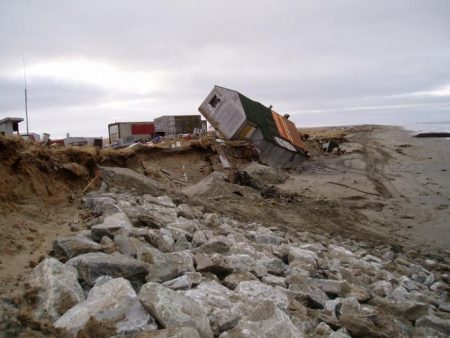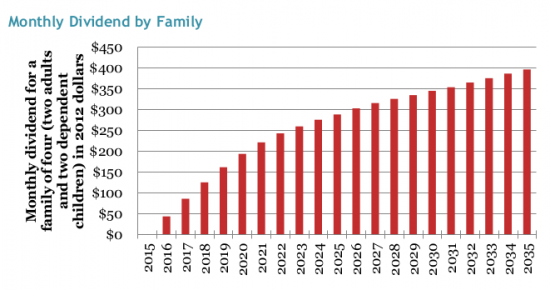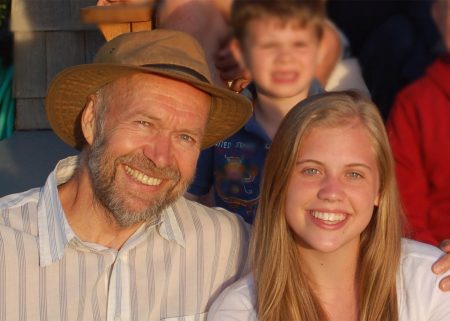April 17, 2017 – One of the first American scientists to alert the world and the U.S. Congress back in 1988 to global warming, Professor James Hansen, and a man reviled by climate change skeptics and deniers, argues in a recent statement that regulating carbon emissions, the strategy President Obama tried to impose, was “not that effective.” Instead, he points to an approach suggested by several Republicans in the House and Senate to put a price on carbon.
Hansen, in a Scientific American interview, argues that regulation isn’t simple but a price on carbon is.
How would it work? Fossil fuel companies would be charged a fee with the money going back to individual citizens in the form of a dividend. He proposes a starting price of $55 per ton which would yield a dividend of $1,000 per individual, and $3,000 for a family with two or more dependent children. Over time the carbon price and dividend would rise (see graph below). Such a plan would make fossil fuel more expensive over time so that people would seek cheaper alternatives.
Hansen has joined with the 21 young people who are suing the federal government for inaction on dealing with the burning of fossil fuels and their impact on global climate. He believes in the absence of climate change leadership in the executive branch of the American government, that the judiciary, even a conservative-leaning one, will become the bulwark for defending the rights of children to have a safe and healthy future with equal opportunity to that of their parents and grandparents.
Hansen (seen above with one of the 21 young people suing the U.S. government) also believes that, in the face of an executive dominated by climate change skeptics, that scientists universally need to be better at communicating the facts to the public in as clear a way as possible. Right now Hansen believes skeptics have made it seem like scientists have an anti-American agenda that will turn the United States into an energy poor, economically depressed country, a leveling of the playing field to make America no better than the rest of the world in terms of quality of life and opportunity.
Hansen, therefore, advocates that scientists need to tell their story of what is happening and explain why climate systems have “a delayed response” to carbon emissions build up, making “this whole thing so dangerous.” He continues, “You might think the great inertia of the ocean and the ice sheets is our friend because we’ve seen a relatively slow response so far. But it’s very clear in the science that we’re building in bigger changes in the future, so there’s a danger of handing young people a system that’s out of their control.”
Hansen is right about the perception of climate change impacts in the lower 48 states. It is not top of mind to most Americans. But it is very much happening now in places further to the north such as Canada, Alaska, and Siberia. In the latest report from CBC News, dated today, reporter David Michael Lamb states, “Canada is melting.” Not all of it, just the northern half. That’s because much of Canada’s north is underlain by permafrost that has not melted in 10,000 years since the end of the last Ice Age.
In places like Inuvik, Northwest Territories, “as much as 90% of…ground is actually frozen water,” called permafrost. To those who live on top of it it soon may be given a new name, “impermafrost,” because although there has always been a seasonal surface melt of frozen ground, the “thaw is getting deeper now, and that wreaks havoc.” Buildings constructed using stilts sunk 5 to 6 meters (16 to 20 feet) below ground are no longer stable (see image below from an Alaskan village built on permafrost). Many structures have to be abandoned. Rebuilding requires more expensive foundations, driving stilts 15 to 20 meters (almost 50 to 75 feet) underground where they can rest on still frozen permafrost or bedrock.

Winter ice roads, the principal means of transportation at that time of year, are breaking up earlier in the season now. To replace these highways, Canada’s northern governments is expending additional money on permanent gravel roads. These are also also difficult to maintain because they too are built over a growing impermanent permafrost.
That’s why northern Canadians, if asked, would say to Hansen “no delayed response is happening here.” The Canadian north, Alaska and Siberia are now the front line of active remarkable changes occuring over very short periods of time, a story in need of telling repeatedly in the lower 48 United States. A majority of Americans need to know the facts from the propaganda shouted by government-appointed climate science deniers like Scott Pruitt, Donald Trump’s Administrator of the Environmental Protection Agency, and Rick Perry, his Energy Secretary.

















